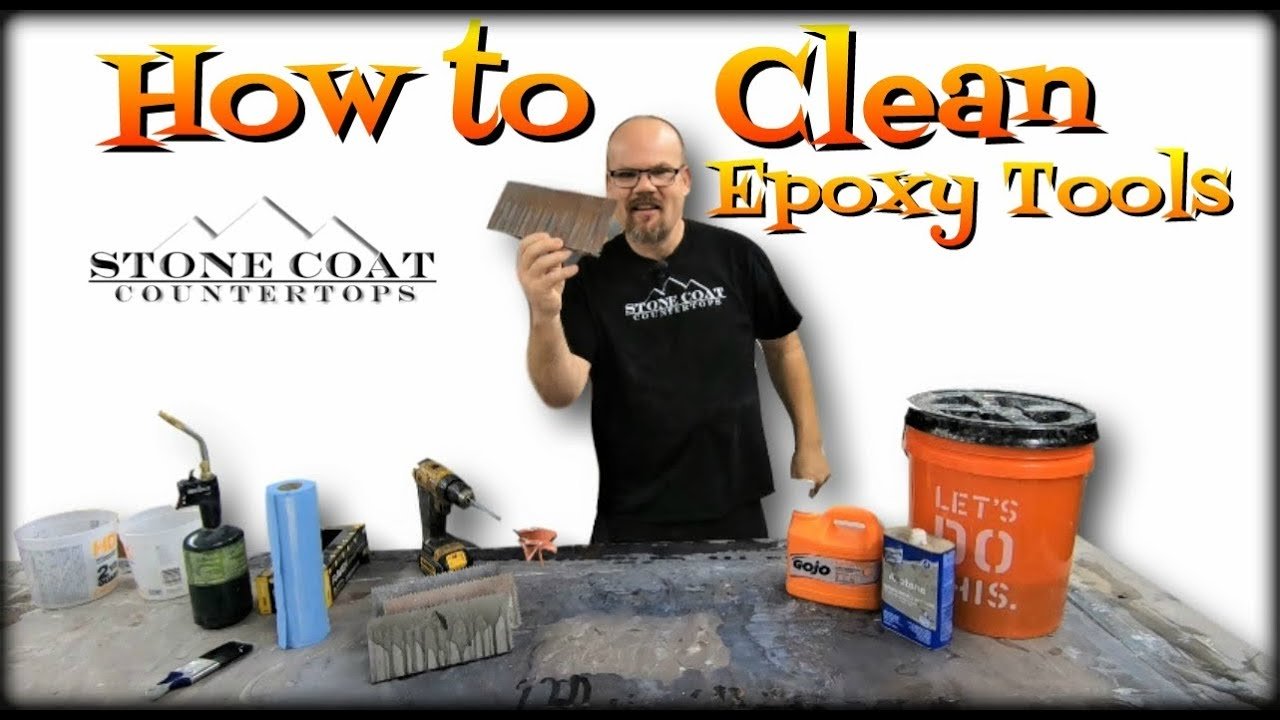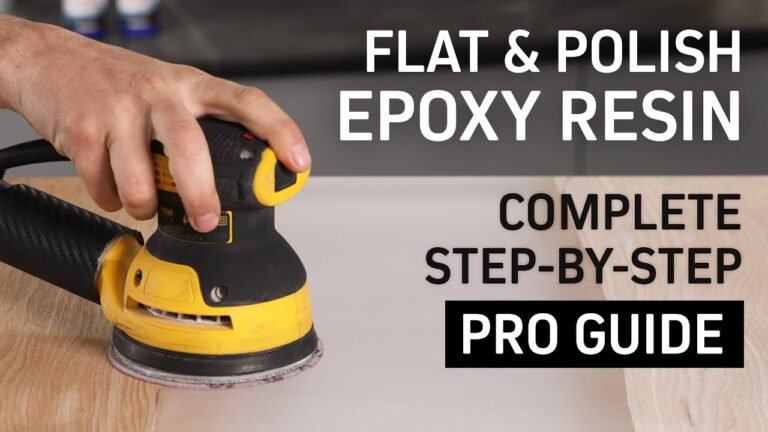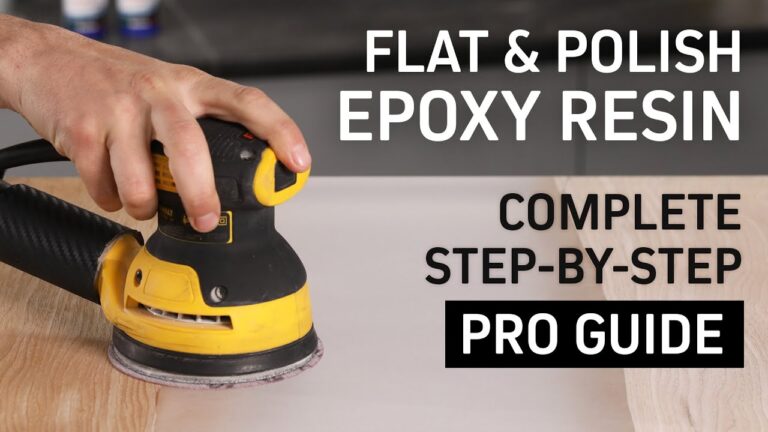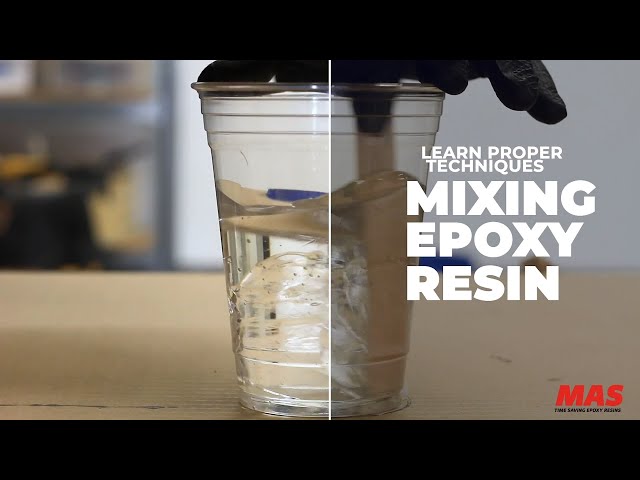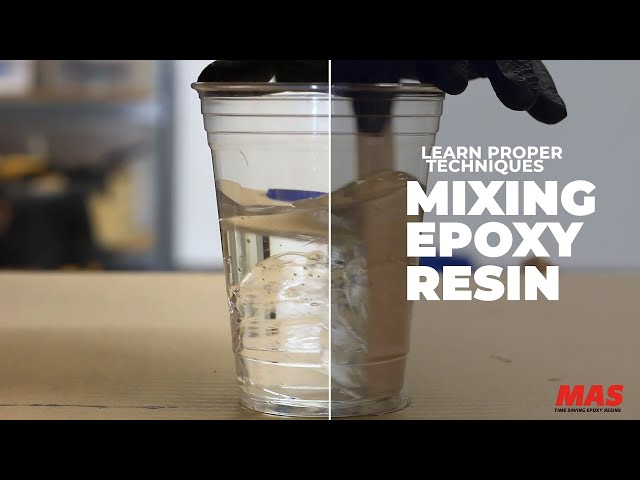How to Clean Epoxy Resin Off Tools: Effective Methods
Cleaning Epoxy Resin Off Tools
When working with epoxy resin, it’s crucial to know the best ways to clean your tools to ensure their longevity and performance. This section will guide you through the processes of removing uncured resin and cleaning epoxy tools before curing.
Removing Uncured Resin
Removing uncured epoxy resin from your tools is easier than dealing with cured resin. Uncured resin remains in its liquid state and can be wiped off with the right materials.
Steps to Remove Uncured Resin:
-
Prepare Your Workspace: Lay down a protective sheet to catch any drips or spills.
-
Use a Scraper: Gently scrape off as much of the uncured resin as possible using a plastic scraper.
-
Apply Solvent: Dampen a cloth with isopropyl alcohol or acetone and wipe the resin off your tools. Be sure to work in a well-ventilated area to avoid inhaling fumes.
-
Wipe Clean and Rinse: Once the resin is removed, wipe your tools with a clean cloth dipped in warm, soapy water. Rinse thoroughly and dry.
Here’s a table to compare different solvents:
| Solvent | Effectiveness | Safety Precautions |
|---|---|---|
| Isopropyl Alcohol | High | Use in well-ventilated area, avoid contact with skin |
| Acetone | High | Highly flammable, use with caution |
For further details on working with uncured resin, check out our article on how to remove epoxy resin.
Cleaning Epoxy Tools Before Curing
It’s easier to clean your tools if you do so before the resin has had a chance to cure.
Steps for Cleaning Before Curing:
-
Wipe Excess Resin: Immediately after use, wipe off any excess resin with a paper towel.
-
Use a Solvent: Just like with uncured resin, use isopropyl alcohol or acetone. Soak a cloth in the solvent and thoroughly wipe down the tools.
-
Soak Tools: For tools with intricate parts, such as brushes, you can soak them in a container filled with the solvent for 10-20 minutes to break down the resin.
-
Rinse and Dry: After soaking, rinse the tools in warm, soapy water and allow them to dry completely.
Effective cleaning ensures that your tools are ready for the next project and helps prevent resin build-up.
For tips on cleaning your hands and surfaces after working with epoxy, explore our guide on how to get epoxy resin off hands.
By following these methods, you can keep your tools clean and in good working condition, making your epoxy projects more efficient and enjoyable. For more tips on handling epoxy resin, visit our section on how to use epoxy resin.
Environmental Impact on Epoxy
Understanding how environmental conditions affect epoxy resin is crucial for maintaining its effectiveness and ease of cleanup. This section will address the impact of both low and warm temperatures on epoxy resin.
Effects of Low Temperatures
Low temperatures can have a significant impact on the curing process of epoxy resin. When temperatures drop, epoxy resin tends to cure much more slowly. This delay in curing can result in several issues that may affect your project.
- Slower Curing Times: The curing process of epoxy resin is slowed down significantly in low temperatures. This means longer waiting times before the resin hardens completely.
- Increased Viscosity: Cold temperatures increase the viscosity of the epoxy, making it thicker and harder to work with. This can make it challenging to achieve a smooth application.
- Potential Cloudiness: Low temperatures can cause the epoxy to appear cloudy or milky. This happens because the resin may not fully cure or incorporate properly.
- Incomplete Curing: In extreme cases, epoxy resin may not cure completely in cold conditions, leaving it sticky and unusable.
Challenges in Warm Environments
High temperatures can also pose challenges when working with epoxy resin. Warm environments can accelerate the curing process, leading to a different set of problems.
- Accelerated Curing Process: In warm conditions, epoxy resin cures much faster. This reduces your working time and may require quicker application to avoid premature hardening.
- Potential Issues with Final Product: The faster curing process can result in bubbles, blisters, and inconsistent curing. This compromises the quality of the final product.
- Shortened Working Time: As temperatures rise, the working time for epoxy resin decreases. You need to work quickly and efficiently to apply the resin before it starts to set.
- Increased Viscosity: While low temperatures make the resin thicker, high temperatures can make it too runny, which can be just as problematic.
By understanding the effects of temperature on epoxy resin, you can better prepare for your projects and ensure a smoother process. For more tips on handling epoxy resin, check out our section on how to clean epoxy resin.
“`
| Environmental Factor | Low Temperatures | Warm Temperatures |
|---|---|---|
| Curing Time | Slower | Accelerated |
| Viscosity | Increased | Increased |
| Common Issues | Cloudiness, Incomplete Curing | Bubbles, Blisters, Inconsistent Curing |
| Working Time | Longer | Shortened |
If you need more information on using epoxy resin, read our articles on how to use epoxy resin and how to cure epoxy resin.
Cleaning Methods and Techniques
When dealing with epoxy resin, it’s crucial to adopt effective methods to ensure your tools remain clean and reusable. This section covers the best practices for removing epoxy resin in its various states.
Cleaning Wet Resin
If you catch the epoxy resin while it’s still wet, it’s much easier to clean. First, wipe off as much resin as possible using a paper towel. Once you’ve removed the bulk, use resin remover, denatured alcohol, or acetone on a paper towel to clear any remaining residue. Wearing nitrile gloves is essential to avoid skin irritation during this process.
| Cleaning Material | Purpose | Recommendation |
|---|---|---|
| Paper Towel | Initial cleanup | High |
| Resin Remover | Residue removal | High |
| Denatured Alcohol | Residue removal | Medium |
| Acetone | Residue removal | Medium |
| Nitrile Gloves | Skin protection | High |
For a detailed walkthrough, check out our guide on how to remove epoxy resin.
Effective Epoxy Removal Techniques
Two effective methods for cleaning resin mixing containers are the “wipe out wet resin” and “dry & peel” techniques (ArtResin).
- Wipe Out Wet Resin:
- Wipe out as much resin as possible from the sides and bottom of the mixing container with a paper towel.
- Use isopropyl alcohol or acetone to remove any remaining residue.
- Dry & Peel:
- Allow the resin to dry overnight in the container.
- Peel off the dried resin, which should come off cleanly if you’re using polypropylene containers.
| Technique | Steps | Tools Needed |
|---|---|---|
| Wipe Out Wet | Wipe, then clean with solvents | Paper Towel, Isopropyl Alcohol, Acetone |
| Dry & Peel | Let dry, then peel | Polypropylene containers |
Learn more about cleaning techniques and the best epoxy resin cleaning solutions.
Cleaning Resin Residue
Residual resin can be stubborn and might require a bit more effort. For cleaning tools like brushes and stirring sticks, consider the following steps:
- Soap and Water: Once the bulk of the resin is removed, wash tools with quality soap and warm water. This is effective for most residual resin (Resin Obsession).
- Oils: If resin ends up on your hands, cooking oil can be surprisingly effective at breaking down the sticky residue. Rub a bit of cooking oil on your hands, then wash them with soap and water to clean them thoroughly.
For an all-in-one solution, read our article on how to get epoxy resin off hands.
By using these methods and recommended products, you can ensure that your tools remain clean and in good working condition for your next epoxy project. Remember to also prevent build-up by properly maintaining your tools, as outlined in our tips for storing epoxy resin tools.
Cleaning Tips for Epoxy Tools
Maintaining clean tools when working with epoxy resin is essential for achieving professional results and extending the lifespan of your equipment. Here are some friendly tips to help you get the job done efficiently and safely.
Cleaning Hands and Surfaces
Epoxy resin can be quite sticky and tricky to remove if not handled promptly. Here are some effective strategies for cleaning your hands and surfaces:
-
Wipe off Liquids: Immediately use a paper towel to clean up as much resin as possible while it is still wet. This prevents the resin from curing and sticking to your tools and surfaces permanently.
-
Use Resin Remover or Solvents: For any remaining residue, apply resin remover, denatured alcohol, or acetone to the affected areas (Resin Obsession). Always wear nitrile gloves to protect your skin from irritation.
-
Cleaning Hands: If resin gets on your hands, apply a bit of cooking oil, rub it in thoroughly, and then wash your hands with soap and water to remove the sticky residue (Resin Obsession).
-
Never Pour Resin Down the Drain: Avoid pouring leftover resin down the drain or washing resin-containing containers in the sink, as this can lead to clogged pipes and costly repairs.
Using Household Materials for Cleaning
Sometimes, household materials can be excellent and cost-effective options for cleaning up epoxy resin. Here are a few household items that work well:
-
Vinegar: Vinegar is an effective cleaner for resin messes, including removing sticky residue and wiping off prints left on resin objects (Resin Obsession).
-
Soap and Water: Washing resin cups and tools with quality soap and water can be effective. After washing, flip the items upside down and let them dry on a towel (Resin Obsession).
-
Cooking Oil: If you don’t have specialized cleaners on hand, cooking oil can help remove sticky resin residue from your skin. Simply rub it in, then wash your hands with soap and water (Resin Obsession).
-
Acetone: Acetone is highly effective for removing stubborn resin residue from mixing cups and tools. However, it has a strong odor and can degrade plastic containers (ArtResin).
| Cleaning Material | Best Use |
|---|---|
| Vinegar | Cleaning resin messes and removing sticky residue |
| Soap and Water | General cleaning of resin cups and tools |
| Cooking Oil | Removing sticky residue from skin |
| Acetone | Removing stubborn resin residue from mixing containers |
For more guidance on resin use and care, check out our articles on how to use epoxy resin, what dissolves epoxy resin, and how to sand and polish epoxy resin. Carefully following these tips will help you manage epoxy resin cleanup effectively and keep your workspace tidy.
Recommended Cleaning Products
Selecting the right cleaning products is essential to effectively remove epoxy resin from tools and surfaces. In this section, you’ll learn about specific cleaning solutions and best practices for resin cleanup.
Epoxy Resin Cleaning Solutions
To tackle the challenge of cleaning epoxy resin, several products stand out for their efficiency and safety:
-
SuperClean Epoxy Cleaner by Super Epoxy Resin Systems: This product is designed to clean both uncured and cured epoxy resin from tools and surfaces. It contains Isopropyl Alcohol and proprietary ingredients, making it a versatile choice for various cleanup tasks.
-
Isopropyl Alcohol: Effective for wiping off wet epoxy resin from mixing containers and tools. It’s a commonly recommended solution for easily dissolving resin residue.
-
Acetone: Suitable for removing stubborn resin residue from surfaces and tools. Use it with caution as it can be harsh on certain materials.
-
ArtResin’s Methods: They recommend using paper towels to remove wet resin, and then applying isopropyl alcohol or acetone for any remaining residue. They also suggest using polypropylene plastic cups for mixing resin as they allow cured resin to peel off easily.
| Cleaning Solution | Best for |
|---|---|
| SuperClean Epoxy Cleaner | Removing uncured and cured epoxy resin |
| Isopropyl Alcohol | Wiping out wet resin residue |
| Acetone | Removing stubborn resin residue |
| Polypropylene Plastic Cups | Mixing resin and easy cleanup |
Best Practices for Resin Cleanup
Implementing best practices ensures safe and efficient cleanup of epoxy resin:
-
Wear Protective Gear: Always wear gloves and safety glasses to prevent exposure to harsh chemicals and residues (Xtreme Polishing Systems).
-
Use Appropriate Containers: Mix resin in polypropylene plastic cups as they allow cured resin to peel off easily, minimizing residue and making the containers reusable.
-
Work Slowly with Mechanical Tools: If using mechanical methods like grinders, operate them slowly to avoid overheating and to ensure precision. Consider gaining epoxy resin certification for safe operation (Xtreme Polishing Systems).
-
Pre-treat Areas with Isopropyl Alcohol: For uncured resin spills, wipe the area with isopropyl alcohol to break down the resin, followed by a clean cloth to remove any residue.
-
Avoid Harsh Chemicals on Delicate Surfaces: Use mild cleaning solutions like isopropyl alcohol and avoid acetone on delicate surfaces to prevent damage.
Following these guidelines will make the process of cleaning epoxy resin from tools straightforward and efficient. For additional insights and tips, see our articles on how to clean epoxy resin and how to get epoxy resin off hands.
Proper Storage and Maintenance
Storing and maintaining epoxy resin tools properly is essential to ensure their longevity and effectiveness. By following a few simple steps, you can prevent resin build-up and keep your tools in excellent condition for future projects.
Storing Epoxy Resin Tools
One of the key factors in maintaining your epoxy resin tools is proper storage. Here are some tips to help you store your tools effectively:
- Keep in a Dark Place: Store your resin tools in a dark spot, away from direct sunlight. This prevents the resin from curing prematurely due to exposure to UV light. (ArtResin Blog)
- Stable Temperature: Ensure the storage location maintains a stable temperature at room temperature or slightly below, ideally around 70°F (20°C). Fluctuations in temperature can affect the viscosity and curing process of the resin. (ArtResin Blog)
- Avoid Humidity: Keep your tools in a dry place to prevent moisture from affecting the resin. High humidity can cause issues with curing and lead to defects in your finished projects.
Preventing Resin Build-up
To prevent resin build-up on your tools, it’s important to clean them immediately after use and follow these maintenance tips:
- Clean Immediately: After each use, clean your tools with a suitable solvent, such as isopropyl alcohol or acetone. This prevents resin from hardening and sticking to the tools, making future cleaning easier. Visit our article on how to clean epoxy resin off tools for detailed instructions.
- Use Non-stick Materials: Consider using tools made from non-stick materials, such as silicone, which make cleaning easier and prevent resin from adhering to the surface.
- Protective Coatings: Apply a thin layer of a mold release agent or wax to your tools before using them with epoxy resin. This creates a barrier that makes it easier to remove cured resin.
| Factor | Ideal Condition |
|---|---|
| Storage Temperature | ~70°F (20°C) |
| Light Exposure | Dark, no direct sunlight |
| Humidity | Dry, minimal moisture |
Proper maintenance and storage of your epoxy resin tools not only extend their lifespan but also ensure that you achieve the best results in your projects. For additional tips and guides, visit our articles on how to polish epoxy resin and how to use epoxy resin on wood.

